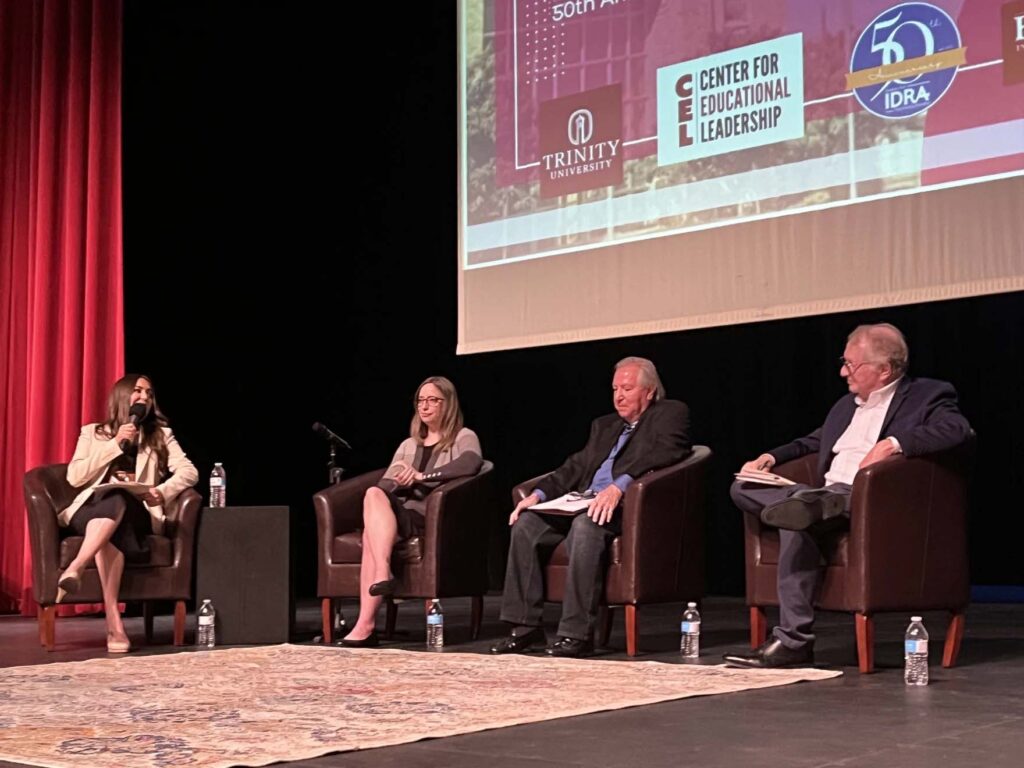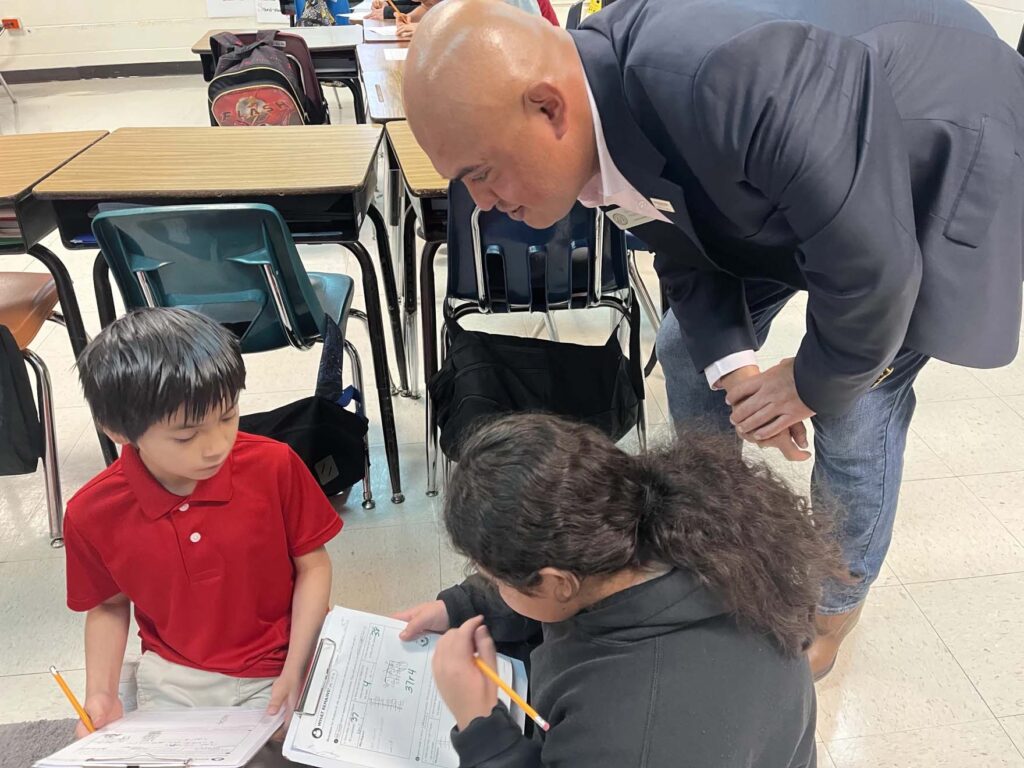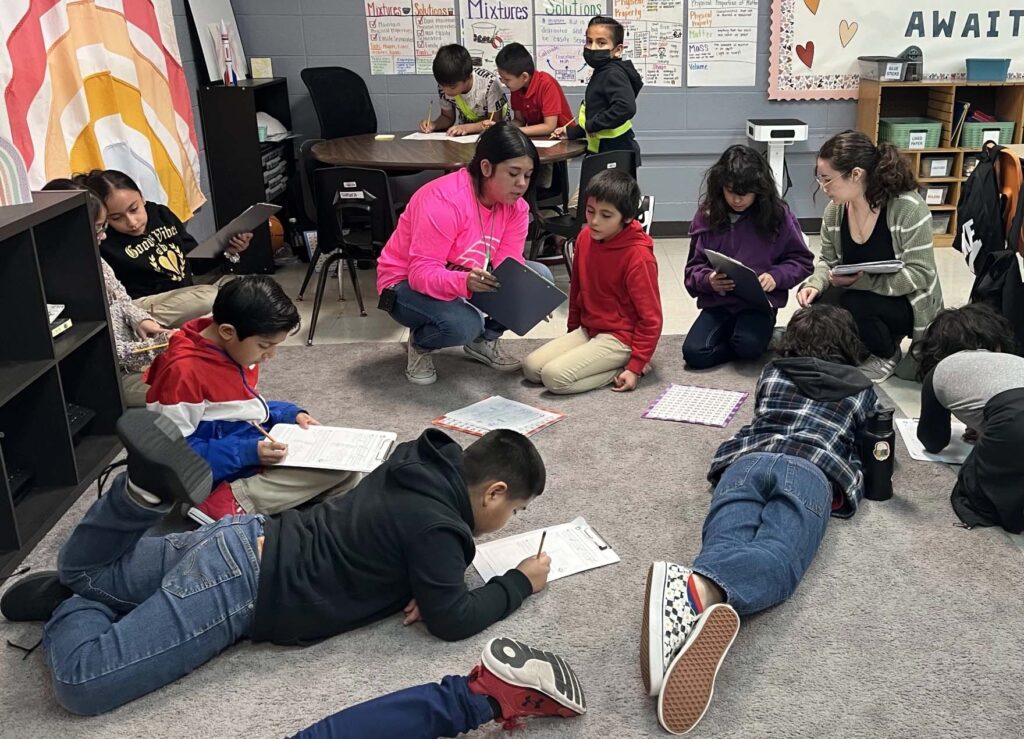From Texas Public Radio:
This is the first story in an ongoing, data-driven TPR series called Golden Pennies.
Texas lawmakers are back in Austin for another attempt at passing school vouchers. At the heart of the debate is a decision about how Texas should fund education.
The state’s current school funding system is so complicated and convoluted that very few people understand it. Lingering inequities are hiding underneath that confusion.
Understanding school funding in Texas must begin with the case of Demitrio Rodriguez.
He was the first plaintiff listed in a landmark lawsuit that made it all the way to the U.S. Supreme Court in 1973.
“He always stood up for the little guy,” said his daughter, Patricia Rodriguez, earlier this year during an event commemorating the 50th anniversary of the court ruling.
“He grew up a son of migrant workers. He himself was a migrant worker as he grew up, eventually making his way to San Antonio to live with relatives because his own parents, my grandparents, felt like he could get a better education here in San Antonio,” she explained. “And throughout his life, he experienced racism in all its types and forms.”

IDRA President Celina Moreno leads a discussion on school finance with Chandra Villanueva of Every Texan, Retired IDRA Policy Director Albert Cortez, and St. Mary’s Law Professor Al Kauffman. Cortez was an expert witness for Edgewood’s two-decade-long fight for school funding equity in state courts. Kauffman was the attorney representing the district.
Camille Phillips / TPR
Ugliness exposed
Demitrio Rodriguez and seven other parents from San Antonio’s Edgewood school district filed the suit in 1968 after seeing their kids’ schools get only a fraction of the funding seen in neighboring districts.
But, in 1973, the Edgewood parents lost. In a narrow 5-4 decision, the Supreme Court ruled the U.S. Constitution does not guarantee equal access to education funding.
Even though the ruling was a major setback for the working-class, Mexican-American families who filed suit, the students who inspired it gathered to remember the case’s 50th anniversary in March.
“The legacy of Rodriguez was that when the case was presented, a lot of the inequalities that existed in the system were uncovered,” said Albert Cortez during the commemoration. “It was like turning over a rock and all the ugliness that was underneath was exposed.”
As policy director for the Intercultural Development Research Association, Cortez helped lead the decades-long fight for school funding equity in Texas that followed the Rodriguez ruling.
He attended high school at Edgewood in the 60s, and remembers outdated textbooks, under prepared teachers, and that there were never enough supplies to go around. His typing class had keyboards painted on student’s desktops because there weren’t enough typewriters.
“We always had the sense that we had less. And what was communicated to us indirectly, then somehow that we were less. Less meaningful. Less important,” Cortez said.
The recapture system
After losing the Rodriguez case, it took 20 years of fighting in state court for Edgewood families to finally see a victory.
In 1993, Texas lawmakers created a court-mandated fix called recapture. The goal of recapture was to level the playing field between property-rich and property-poor school districts by taking some of the property taxes collected by rich districts and giving it to poor ones. Critics called the system Robin Hood.
Today, recapture is vital for districts like Edgewood. If it relied solely on local taxes, the district would’ve had just $2,300 last year for each student. With state and federal money added in, Edgewood had close to $11,000.
But the district still struggles to meet students’ needs.
“We need an upgrade to one of our elementary schools, one of the oldest elementary schools in the district. We need a career and technology center. Some of our buildings just need in terms of just the walking into the building, the vestibule for safety and security reasons,” said Edgewood Superintendent Eduardo Hernandez.
‘On our people’s backs’
While today’s school funding system gives property-poor school districts more money to pay teachers and buy supplies, it doesn’t address bonds, which are used to pay for building renovations.
When the Gilmer-Aikin Laws of 1949 encouraged one-room schoolhouses to consolidate, no one wanted to work with Edgewood. Racist housing policies had blocked the district into an area of concentrated poverty.
Even today, Edgewood’s 16 square miles don’t have the tax base of the business corridor downtown — or wealthy Alamo Heights a few miles away.
“We have nothing but very modest homes in Edgewood. The value of most of our homes is not very high. It’s somewhere between $40,000 and $70,000. So, we would have to raise a bond on, for lack of a better word, on our people’s backs.”
Hernandez said Edgewood hasn’t tried to go out for a bond in nearly 15 years, and even if it did, one wouldn’t go very far. That’s forced him to use money that’s supposed to be used on daily operations to fund building repairs.
“Just a year ago, we had the air conditioning going out of one of our middle schools that cost over $1,000,000,” Hernandez said. “You have a water main break or you have the grease trap that went out. I’m using examples that have happened. I remember them. Those are all $50,000, $60,000, $70,000 or more.”
Teaching challenges
Despite the unexpected costs of aging buildings, Hernandez said his first priority is educating students. Edgewood has one of the highest starting teacher salaries in San Antonio, but the district also has a lot of first year teachers.
Recently At Edgewood’s LBJ Elementary, one of those first-year teachers took her students through a math lesson. The students sat in rows at their desks while the teacher used a screen projector to walk them through the steps to solve a multiplication equation.
“Watching right now, I think she’s going through a certain motion right now, like any first-year teacher would,” Hernandez said.
Hernandez said if Edgewood could afford it, LBJ Elementary would have an instructional coach dedicated to pedagogy to help new teachers learn how to keep students engaged.
“Somebody that can coach that teacher in real time, so that they learn their craft better. Because it’s not just knowing the content, it’s how do you deliver the content in a way that the student can retain that content,” he said.
Down the hallway in another classroom, an experienced teacher led her 4th grade students in a song they memorized to learn the multiplication table.
“You told me 54, 63. Wait a minute. Oh! 72, 81, and 90 are all that are left. No way I forget my nines. My nines. My nines,” they sang.

Edgewood Superintendent Eduardo Hernandez leans over to talk to 4th grade students completing worksheets at LBJ Elementary on Oct. 5, 2023.
Camille Phillips / TPR
The teacher grouped the students in pairs to go over a worksheet.
“Here you have a teacher that’s experienced. She’s exceptional,” Hernandez said.
He leaned down to speak to two students sitting on a carpet filling out a worksheet. “Is it easy for you? Yes and no? Are you guys helping each other out? All right, well, I’ll leave you alone. I know I’m getting in the middle,” Hernandez said.
The students’ replies were so quiet they were barely audible. In an ideal world, Hernandez said he’d have more counselors to help build the kids’ self-confidence.
“A lot of times children have a hard time just speaking up for themselves,” Hernandez said. “One counselor for 400-and-something kids with all the other duties she has to do is not adequate.”
Unfairness endures
Ninety seven percent of LBJ Elementary students are economically disadvantaged. Nearly one in four are English language Learners. They need more resources than the average student, but according to a TPR analysis of state and federal data, Edgewood has about $1,500 less per student than the state average, and $4,000 less than the U.S. average.
Hernandez said if he had $4,000 more per student, his number one priority would be additional teachers and additional counseling.
Even though recapture gives property-poor districts like Edgewood a lot more funding than they had before 1993, today’s school funding system still isn’t fair.
A change in the law that created something called Golden Pennies plays a big part in that.
Part two of TPR’s special series Golden Pennies will explore the reasons why.















